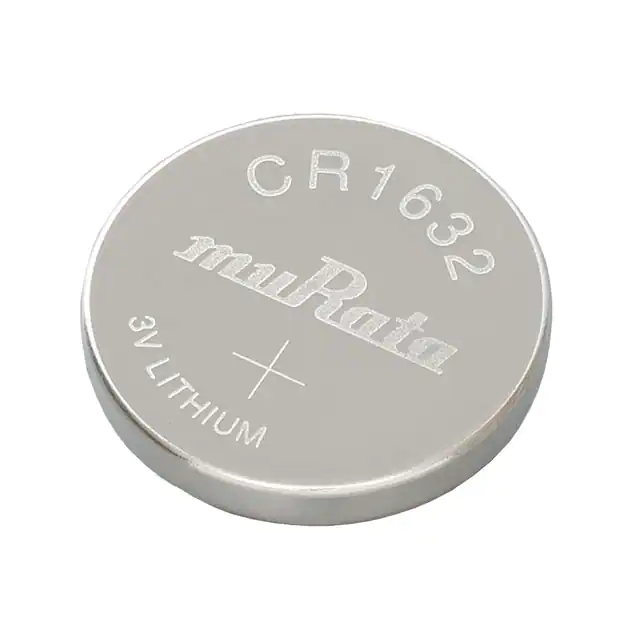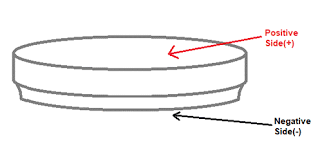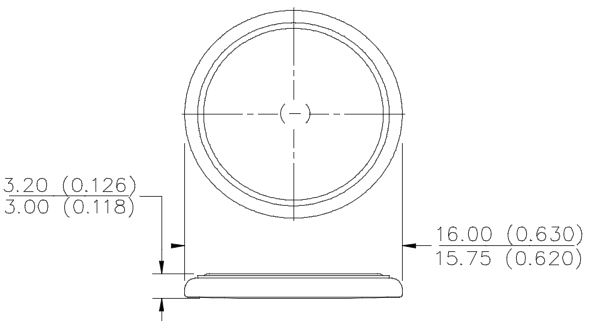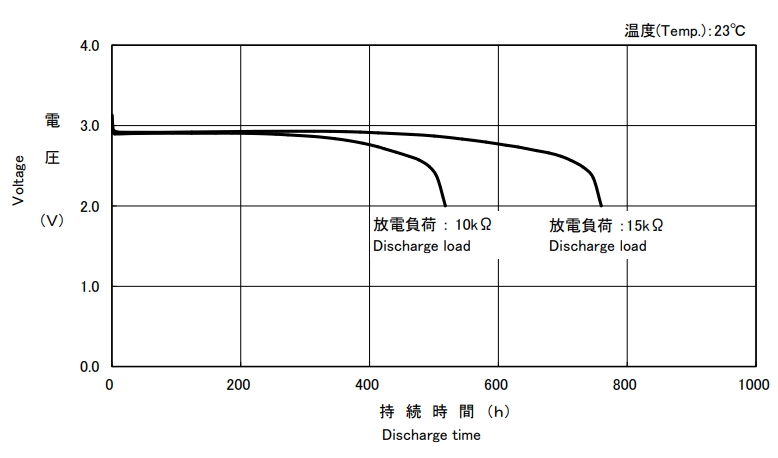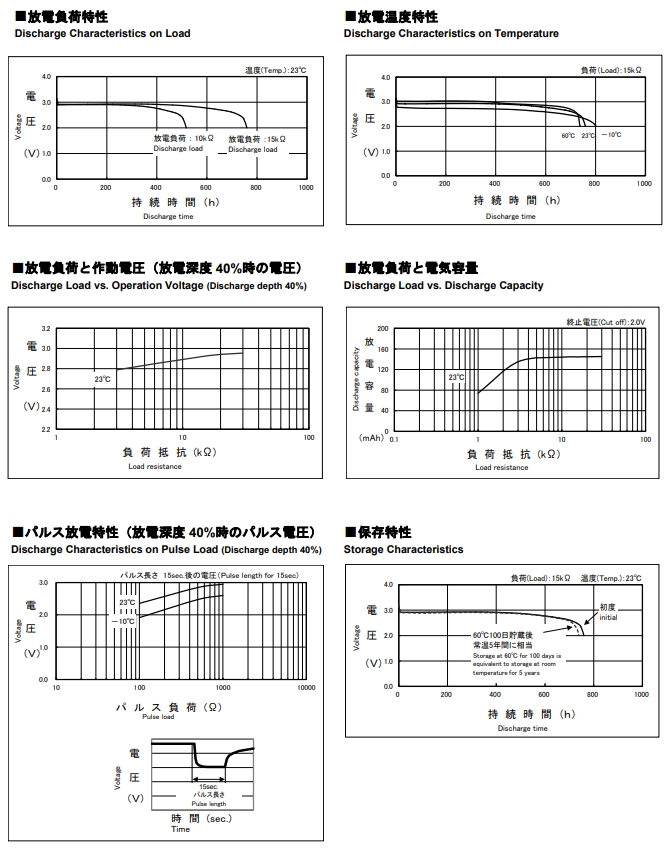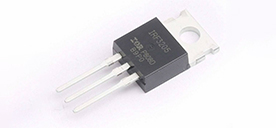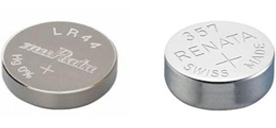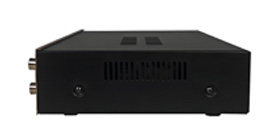CR1632 Batteries: Functions, Features, and FAQs
2024/6/12 14:37:16
Views:
In today's digital age, batteries have become an indispensable part of our lives, especially for small electronic devices and sensors. CR1632 batteries are a typical button battery that are utilized in a wide range of applications. This page aims to give readers a thorough understanding and reference by delving deeply into the functions, applications, and performance evaluation of CR1632 batteries.
Toyota remote control CR1632 battery replacement - Toyota Auris E150, 2011 - tutorial
- What is CR1632 battery?
- CR1632 Lithium Coin Cell Battery Pinout
- CR1632 Lithium Coin Cell Battery CAD Model Symbol and Footprint
- CR1632 Lithium Coin Cell Battery Specifications
- CR1632 Lithium Coin Cell Battery Features
- CR1632 Lithium Coin Cell Battery Dimensions
- CR1632 Lithium Coin Cell Battery Applications
- CR1632 Lithium Coin Cell Battery Equivalents
- CR1632 Lithium Coin Cell Battery Discharge Characteristics
- How to test a cr1632 battery
- Is CR1632 the same as CR2032?
- Safety Guidelines
- Datasheet PDF
- Frequently Asked Questions
-
What is CR1632 battery?
BATTERY LITHIUM 3V COIN 16MM
Because of its small size and dependable performance, the CR1632 battery is a type of lithium coin cell battery that is frequently used in a variety of electronic products. Measuring approximately 16mm in diameter and 3.2mm in height, the CR1632 is characterized by its flat, disc-like shape. This battery type is specifically designed to provide a stable power source for small, low-drain devices that require long-term energy supply.
The "CR" designation indicates that the battery employs lithium chemistry, which offers several advantages over other types of batteries, including a longer shelf life and better performance in a wide range of temperatures. Space and weight are important considerations in many applications, and lithium batteries are well-known for their high energy density and lightweight design.
One of the key features of the 1632 battery is its relatively high energy density, which allows it to deliver consistent voltage output over an extended period. This means that it can power items like watches, remote controls, calculators, key fobs, and small electrical devices. Furthermore, the CR1632 is a great option for backup power applications because of its low self-discharge rate, which allows it to hold its charge for longer periods of time while not in use.
CR1632 Lithium Coin Cell Battery Pinout
Here is an explanation of the CR1632 battery Pin Description:
Positive Side (+):
The positive terminal of the CR1632 battery is the top flat side.
It is typically marked with a '+' symbol to indicate polarity.
This side is usually connected to the positive terminal of the circuit.
Negative Side (-):
The negative terminal is the bottom, slightly recessed side.
Typically, this side is linked to the circuit's negative terminal.
CR1632 Lithium Coin Cell Battery CAD Model Symbol and Footprint
CR1632 Symbol
The CR1632 battery symbol consists of several parts:
1. Central Vertical Line: This represents the central axis of the battery.
2. Orange rectangles at the top and bottom: These indicate the battery's positive and negative terminals, respectively. The polarity can be distinguished with the use of color.
3. Left and Right Horizontal Black Rectangles: These signify the connection points or terminals of the battery.
4. Plus Sign (+): The plus sign on the right side indicates the positive terminal of the battery, assisting in proper installation.
This symbol is used in circuit diagrams and electronic device manuals to clearly show the battery's polarity and how it should be connected within a circuit.
CR1632 Footprint
This image shows the footprint for a CR1632 battery holder, which is a pattern used in printed circuit board (PCB) design to indicate where the battery holder should be placed. Here's a detailed description:1. Central Large Orange Circle: This represents the main body of the battery, showing the area that will be occupied by the CR1632 battery on the PCB.
2. Top and Bottom Smaller Orange Circles: These likely represent solder pads or contact points for the battery holder. These areas are where electrical connections will be made to ensure the battery is properly integrated into the circuit.
3. Left and Right Orange Ovals with Purple Circles: These indicate the areas where additional support or connections for the battery holder will be made. The orange ovals could represent the mechanical supports or the pads for soldering, and the purple circles may represent holes for through-hole components or additional solder points.
4. White Outline: This shows the mechanical outline of the battery holder, providing guidance for where the physical components should be placed. It includes cutouts and features to accommodate the shape and size of the CR1632 battery and its holder.
5. Plus Sign (+) at the Top: This designates the positive terminal of the battery and specifies its direction. This is essential to guarantee that the battery is inserted correctly and has the proper polarity.
The footprint ensures that the battery holder is correctly positioned and aligned on the PCB, providing the necessary electrical and mechanical connections for the CR1632 battery.
CR1632 Lithium Coin Cell Battery Specifications
CR1632 Lithium Coin Cell Battery Features
1. Enhanced Pulse Capability:
The cr1632 3v battery is engineered with a remarkable pulse capability, enabling it to deliver quick bursts of energy when required. This feature is particularly advantageous in applications where sudden power surges or spikes are encountered, ensuring seamless functionality without compromising performance.
2. Superior Discharge Characteristics:
With its high discharge characteristics, the CR1632 excels in providing consistent and reliable power output over extended periods of use. This attribute is critical in scenarios where sustained power delivery is essential, guaranteeing uninterrupted operation and optimized device performance.
3. Maintained Voltage Stability:
Throughout the discharge cycle, the CR1632 maintains a stable voltage level, ensuring uniform power delivery to connected devices. This stability minimizes fluctuations in power supply, thereby safeguarding sensitive electronics from potential damage or malfunction due to voltage variations.
4. Long-Term Reliability:
Engineered for longevity, the CR1632 exemplifies long-term reliability in various operational environments. Its robust construction and dependable performance instill confidence in users, assuring consistent power availability over the battery's lifespan.
5. Lightweight and Non-Rechargeable:
Weighing a mere 1.8 grams, the CR1632 is exceptionally lightweight, facilitating effortless integration into compact electronic devices without adding unnecessary bulk. Furthermore, as a non-rechargeable battery, it eliminates the need for complex charging infrastructure, simplifying device maintenance and operation.
6. Generous Capacity:
Boasting a capacity of 130 milliampere-hours, the CR1632 offers ample energy storage for powering a diverse range of electronic applications. This large capacity increases the devices' runtime, lowering the need for frequent battery changes and improving user convenience.
7. Optimal Operating Voltage:
With an operating voltage of three volts, the CR1632 provides a reliable power supply that meets the requirements of most electronic devices. This voltage level guarantees smooth integration and reliable operation with a broad variety of consumer gadgets.
8. Precise Current Specification:
The CR1632 battery is designed with a precise current value001 of 0.19 milliamperes, optimizing power delivery for efficient device operation. This meticulous specification ensures that the battery delivers the necessary current to meet the demands of connected electronics, maximizing energy efficiency and prolonging battery life.
CR1632 Lithium Coin Cell Battery Dimensions
CR1632 Lithium Coin Cell Battery Applications
1. Wireless Doorbells:
CR1632 batteries serve as the power source for wireless doorbell systems, providing reliable energy to activate doorbell chimes and transmitters. Their compact size and long-term reliability make them ideal for this application, ensuring consistent performance in home security systems.
2. Electronic Toys:
Many electronic toys, ranging from remote-controlled cars to interactive gadgets, rely on CR1632 batteries for power. Their high discharge characteristics and stable voltage output make them suitable for driving motors, powering LED displays, and enabling various interactive features in toys.
3. Portable Electronics:
CR1632 batteries find widespread use in an array of portable electronic devices, including calculators, key fobs, and remote controls. Their lightweight design and generous capacity make them indispensable for powering these devices, ensuring convenience and longevity in everyday use.
4. Digital Thermometers:
CR1632 batteries power digital thermometers, providing the necessary energy to operate temperature sensors and display readings accurately. Their stable voltage output ensures precise temperature measurements, making them essential components in medical and industrial thermometry applications.
5. Digital Altimeters:
In aviation and outdoor sports equipment, such as altimeters used in hiking and climbing, CR 1632 batteries play a crucial role in powering altitude measurement functions. Their high discharge characteristics and long-term reliability enable accurate elevation tracking and display in challenging environments.
6. Cyclocomputers:
Cycling enthusiasts rely on cyclocomputers equipped with CR1632 batteries to monitor speed, distance, and other performance metrics during rides. The batteries' stable voltage output and lightweight design ensure uninterrupted data recording and display, enhancing the cycling experience.
7. Heart Rate Monitors:
CR1632 batteries power heart rate monitors worn during exercise and medical monitoring applications. Their good pulse capability and long-term reliability enable continuous heart rate tracking, providing valuable insights into cardiovascular health and fitness performance.
8. Watches and Small PDA Devices:
Perhaps one of the most common applications, CR1632 batteries are widely used to power wristwatches, digital watches, and small personal digital assistant (PDA) devices. Their compact size, stable voltage output, and generous capacity ensure reliable timekeeping and functionality in these essential everyday accessories.
The CR1632 lithium coin cell battery finds extensive applications across diverse industries, powering an array of electronic devices essential for modern living and leisure activities. From home security systems to fitness trackers, its versatility, reliability, and long-lasting performance make it a staple power source in today's interconnected world.
CR1632 Lithium Coin Cell Battery Equivalents
When seeking alternatives or replacements for the CR1632 lithium coin cell battery, several equivalent models offer similar performance and compatibility. To ensure seamless integration with a variety of electrical devices, it is imperative to understand these cr1632 battery equivalent. Here are the prominent alternatives:
1. DL1632:
The DL1632 serves as a functional equivalent to the CR1632 battery, offering comparable voltage rating, capacity, and dimensions. Manufactured by reputable brands, DL1632 batteries provide reliable performance and compatibility with a wide range of electronic devices, making them a popular choice for battery replacement needs.
2. ECR1632:
Another viable substitute for the CR1632 is the ECR1632 battery, which shares similar specifications and dimensions. With a focus on quality and reliability, ECR1632 batteries deliver consistent power output and longevity, making them suitable for various applications, from portable electronics to medical devices.
To guarantee that they fulfill industry standards for performance, dependability, and safety, these alternatives go through extensive testing. As such, consumers can confidently rely on DL1632 and ECR1632 batteries as interchangeable options for their CR1632 battery needs.
It's worth noting that while these equivalents offer comparable performance, slight variations in specifications or manufacturing processes may exist. Therefore, it's advisable to consult device manuals or manufacturers' recommendations when selecting replacement batteries to ensure optimal compatibility and performance.
CR1632 Lithium Coin Cell Battery Discharge Characteristics
The discharge characteristics of a CR1632 battery typically refer to its performance over time as it releases stored energy. These characteristics include factors such as voltage output, capacity, and discharge rate. Both the voltage and capacity of the battery steadily drop as it empties. Temperature and load are two examples of variables that might affect the discharge rate. Comprehending these attributes is vital in forecasting the longevity of the battery and guaranteeing peak efficiency across diverse uses.
Here's a breakdown of the discharge characteristics of a CR1632 battery under various conditions:
1. Discharge Characteristics on Load:
This refers to how the battery performs under different loads. As the load increases, the discharge rate may vary, affecting factors such as voltage output and capacity.
2. Discharge Characteristics on Temperature:
Temperature can significantly impact battery performance. Higher temperatures generally lead to increased discharge rates and reduced capacity, while lower temperatures can have the opposite effect.
3. Discharge Load vs. Operation Voltage (Discharge depth 40%):
This shows the relationship between the discharge load applied to the battery and its operational voltage when discharged to a depth of 40%. It helps understand how the battery responds to different loads while maintaining a certain level of discharge depth.
4. Discharge Load vs. Discharge Capacity:
This indicates how the discharge load affects the overall capacity of the battery. Higher loads typically result in reduced capacity due to increased internal resistance and faster depletion of stored energy.
5. Discharge Characteristics on Pulse Load (Discharge depth 40%):
Pulse loads, such as those encountered in intermittent or burst applications, can have unique effects on battery performance. Understanding how the battery responds to pulse loads, especially when discharged to a depth of 40%, is crucial for applications requiring high bursts of power.
6. Storage Characteristics:
This refers to how the battery behaves when stored for extended periods. Factors such as self-discharge rate and shelf life are essential considerations for applications where batteries may be stored before use.
Each of these characteristics provides valuable insights into the performance and behavior of CR1632 batteries under different conditions, helping to optimize their use in various applications.
How to test a cr1632 battery
A multimeter is used to measure the voltage of a CR1632 battery, a small lithium coin cell that is frequently used in watches, key fobs, and other small gadgets. Here is a detailed how-to:
Materials Needed:
- Digital multimeter
- CR1632 battery
Steps:
1. Set Up the Multimeter:
- Turn on your digital multimeter.
- Usually denoted by a sign like "V⎓," set the multimeter to measure DC voltage (V with a straight line).
2. Select the Appropriate Range:
- Set the range to 3V DC if your multimeter has range settings. Most modern digital multimeters automatically detect the range.
3. Prepare the Battery:
- Remove the CR1632 battery from the device if it is still in use.
4. Test the Battery:
- Press the red probe of the multimeter against the battery's positive terminal (+).
- Press the black probe on the battery's negative terminal (-).
5. Read the Voltage:
- Check the multimeter display for the voltage reading. A fully charged CR1632 battery should read around 3.0V.
- If the reading is significantly lower (below 2.5V), the battery is likely depleted and needs replacement.
6. Interpret the Results:
- 3.0V or slightly above: The battery is fully charged.
- Between 2.5V and 3.0V: The battery is partially discharged but still usable.
- Below 2.5V: The battery is low and should be replaced.
Tips:
- Ensure the probes are making good contact with the battery terminals for an accurate reading.
- If the battery is installed in a device and cannot be removed easily, you might need to access the battery terminals within the device, which may require additional steps or disassembly.
By following these steps, you can accurately determine the charge level of your CR1632 battery and decide if it needs to be replaced.
Is CR1632 the same as CR2032?
while CR1632 and CR2032 batteries share similarities in their chemistry and usage in small electronic devices, they differ in size, capacity, and compatibility. It's essential to use the appropriate battery size and type specified by the device manufacturer to ensure proper function and performance.
1. Size and Dimensions:
- The "CR" designation in both CR1632 and CR2032 stands for "lithium manganese dioxide," indicating their chemical composition.
- The numbers in the names denote their size. In CR1632, the first two digits represent the diameter (16mm), and the last two digits represent the thickness (3.2mm). In CR2032, the diameter is 20mm, and the thickness remains the same at 3.2mm.
2. Capacity and Performance:
- CR2032 batteries typically have a higher capacity compared to CR1632 batteries due to their larger size. This higher capacity allows CR2032 batteries to provide more power and last longer in compatible devices.
- A battery's milliampere-hour (mAh) capacity is a measurement of the amount of energy it can hold. While specific capacities may vary between manufacturers, CR2032 batteries generally have a higher mAh rating than CR1632 batteries.
3. Application Interoperability:
- Small electronic gadgets like watches, remote controls, medical equipment, key fobs, calculators, and watches frequently use both CR1632 and CR2032 batteries.
- It is vital to utilize the exact battery size and type recommended by the manufacturer of the device. Attempting to use a CR1632 battery in a device designed for CR2032 or vice versa could lead to improper fitment or inadequate power supply.
4. Interchangeability:
- Due to the difference in size, CR1632 and CR2032 batteries are not interchangeable.
- Attempting to use a CR1632 battery in a device designed for CR2032 or vice versa could result in improper fitment, potential damage to the device, or insufficient power supply.
- Always check the specifications of your device to ensure you are using the correct battery size and type recommended by the manufacturer.
Safety Guidelines
1. Prevent Ingestion:
In addition to keeping batteries out of reach of children, it's crucial to educate adults and caregivers about the risks associated with battery ingestion. Store batteries in secure containers or compartments inaccessible to children and pets. If ingestion occurs, seek immediate medical attention.
2. Avoid Mishandling:
Mishandling lithium coin cell batteries can result in short circuits, overheating, or leakage of hazardous materials. Always handle batteries with care, avoiding excessive force, bending, or puncturing. Inspect batteries for damage before use and replace any compromised units promptly.
3. Appropriate Elimination:
Follow the rules and regulations in your area when disposing of spent batteries. lithium battery cr1632 3v should not be disposed away with typical household trash since they contain potentially hazardous components. Make use of authorized battery recycling initiatives or collection points to guarantee appropriate disposal and preservation of the environment.
4. Battery Compartment Design:
Pay close attention to the design and construction of battery compartments in electronic devices. Ensure that battery compartments are adequately secured and designed to prevent accidental contact with metallic objects or other batteries, which can lead to short circuits or electrical hazards.
5. Sensitivity to Temperature:
Extreme temperatures can have an impact on the performance and safety of lithium coin cell batteries. Avoid exposing batteries to excessive heat or cold, as it may lead to leakage, reduced capacity, or other adverse effects. Batteries need to be kept out of direct sunlight and heat sources in a cold, dry location.
6. Explosion or Fire Risk:
Lithium coin cell battery overuse or improper handling might result in an explosion or fire risk. Avoid exposing batteries to open flames, high temperatures, or physical damage, as these conditions can trigger thermal runaway and combustion. Use caution when storing, transporting, or disposing of batteries to mitigate fire hazards.
7. Device Compatibility:
Ensure that replacement batteries are compatible with the intended electronic device in terms of voltage, size, and chemistry. Using the wrong or unsuitable batteries might lead to malfunctions, safety hazards, or gadget damage. Refer to device manuals or consult manufacturers for guidance on battery selection and compatibility.
By observing these comprehensive safety guidelines, users can minimize the risks associated with CR1632 lithium coin cell batteries and promote safe handling, usage, and disposal practices. Prioritizing safety ensures optimal performance, longevity, and peace of mind when utilizing electronic devices powered by lithium coin cell batteries.
Datasheet PDF
Frequently Asked Questions
1. What devices use CR1632 batteries?
Numerous small electronic gadgets, including wristwatches, calculators, remote controls, keyless entry systems, digital thermometers, medical equipment, and tiny LED lights, frequently require CR1632 batteries. They are especially well-liked in gadgets where portability and durability are crucial.
2. How long does a CR1632 battery last?
The amount of power consumed by the device, how often it is used, and the operating environment all affect how long a CR1632 battery lasts. Typically, CR1632 batteries have a shelf life of around 5 to 10 years when stored properly. In active use, they can last anywhere from 1 to 3 years, again depending on the device and its usage patterns.
3. Where can I buy CR1632 batteries?
Cr1632 Battery Nearby are widely available for purchase at various retail outlets, including electronics stores, department stores, hardware stores, online marketplaces like Amazon and icwhale.com, and specialty battery retailers. They are frequently offered in single or several packs.
4. What are the dimensions of a CR1632 battery?
The dimensions of a CR1632 battery are approximately 16mm in diameter and 3.2mm in height. These dimensions are standard for CR coin cell batteries, making them interchangeable with other batteries of the same size.
5. How to replace a CR1632 battery?
To replace a CR1632 battery, you typically need to open the battery compartment of your device using a screwdriver or by following the device's specific instructions. Next, make sure the new CR1632 battery is inserted correctly, aligning the positive and negative terminals, and carefully remove the old battery. Finally, close the battery compartment securely.
6. Are CR1632 batteries rechargeable?
No, CR1632 batteries are not rechargeable. They are designed for one-time use only and are not rechargeable because they are main lithium batteries. Recharging a CR1632 battery can be risky as it can lead to leaks, overheating, or even breakage.
7. What are the best brands of CR1632 batteries?
Several reputable brands manufacture CR1632 batteries, including Panasonic, Energizer, Duracell, Sony, Maxell, and Renata. These companies are renowned for their high caliber and dependability in offering durable power for a range of electrical gadgets.
8. How to dispose of CR1632 batteries safely?
It is advised to recycle CR1632 batteries at approved battery recycling facilities or via retailer-sponsored programs in order to dispose of them securely. Many communities also have hazardous waste disposal facilities where you can drop off used batteries for proper recycling or disposal. Because CR1632 batteries contain elements that, if not handled properly, could harm the environment, it is best to avoid discarding them in the usual trash.
9. Can a CR1632 battery be used in place of other CR coin cell batteries?
Yes, in many cases, a CR1632 battery can be used as a replacement for other CR coin cell batteries of the same diameter (16mm) but different heights, such as CR1620 or CR1616. To guarantee correct voltage and fit, it is crucial to verify the device's specs and compatibility before replacing the batteries.
10. What is the voltage of a CR1632 battery?
A CR1632 battery normally has a nominal voltage of 3 volts. Until the battery reaches the conclusion of its charge cycle, this voltage essentially stays constant.
Related Information
-
-
Phone
+86 135 3401 3447 -
Whatsapp

